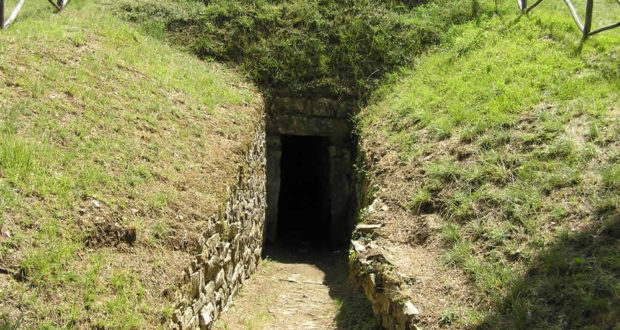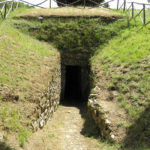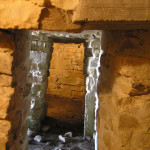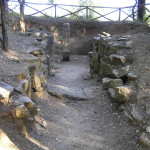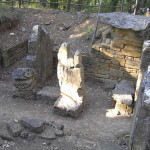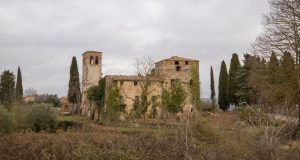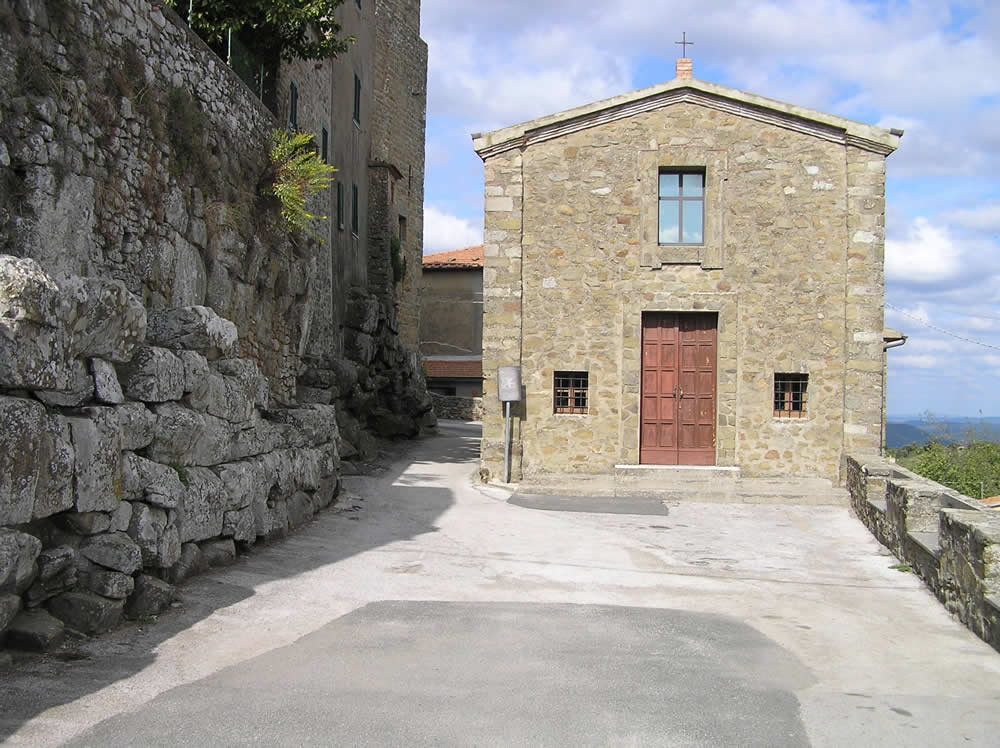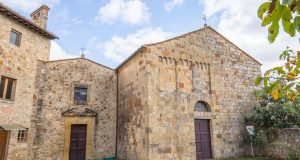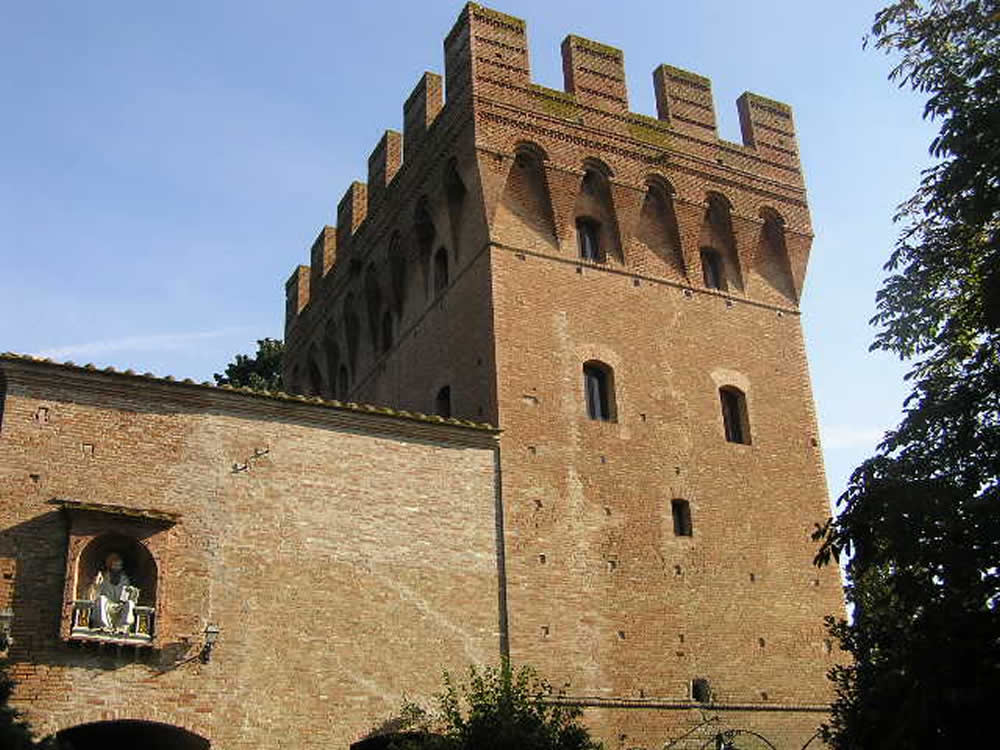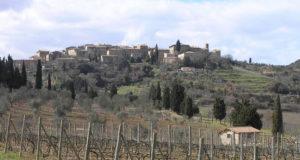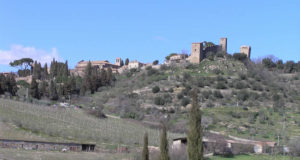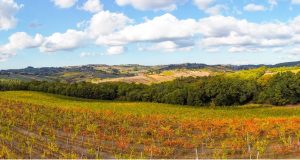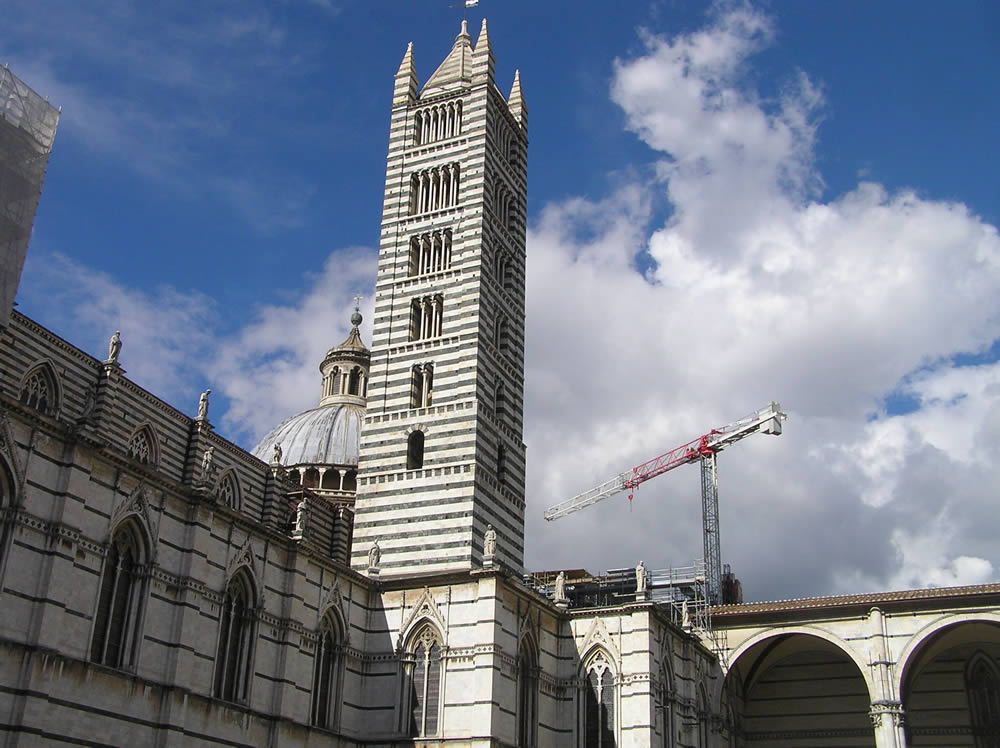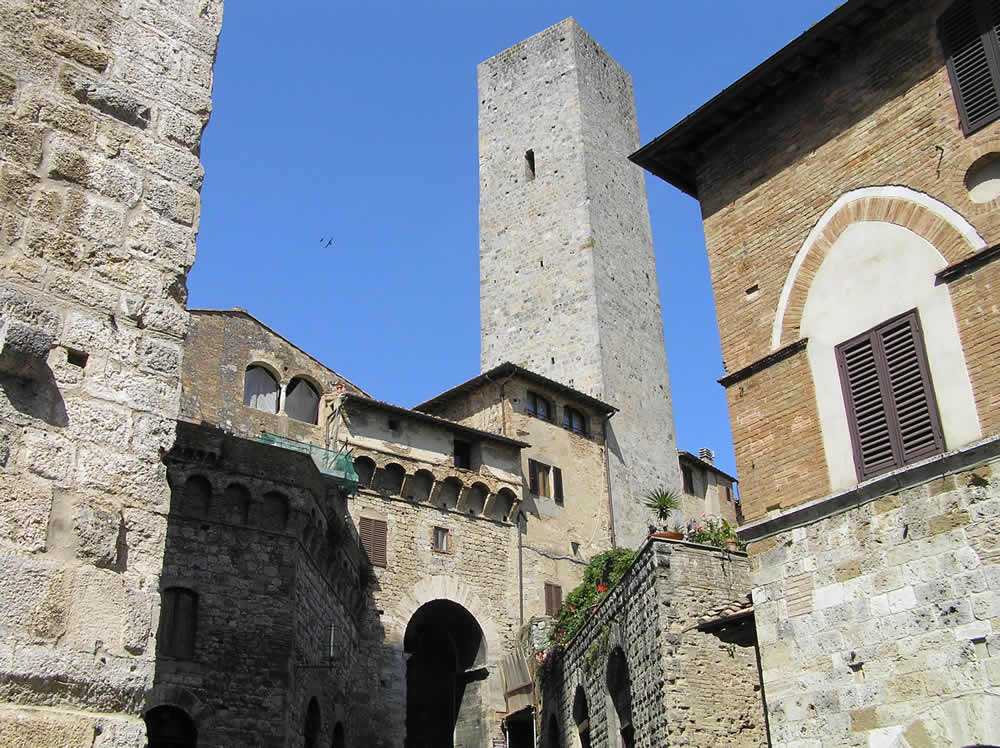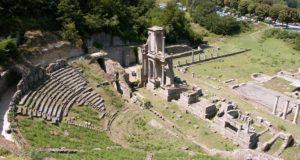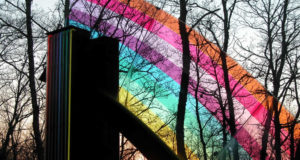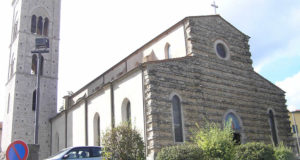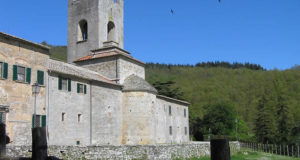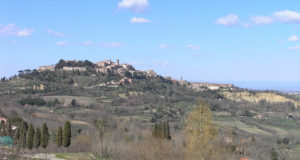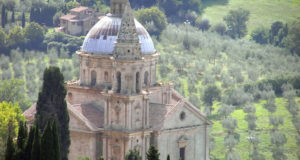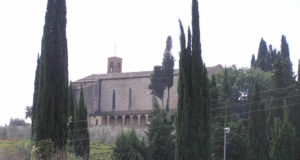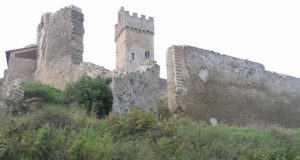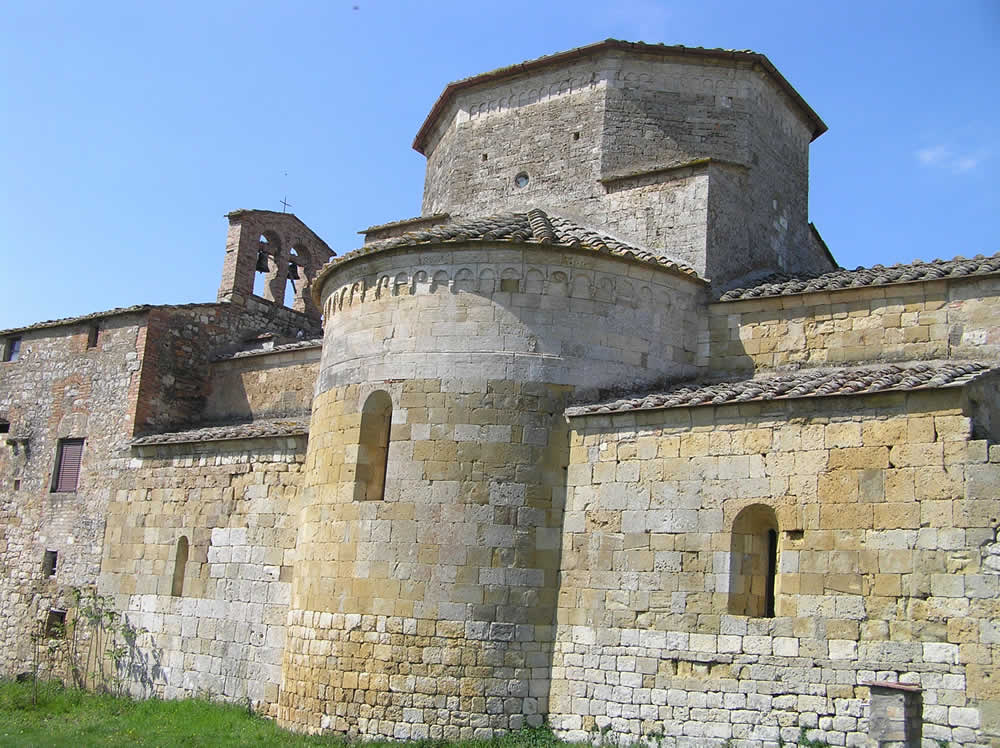![]() Français
Français ![]() Deutsch
Deutsch ![]() Español
Español ![]() Italiano
Italiano
In the area around the medieval village of Castellina in Chianti numerous testimonies of the Etruscan era have been found, including some Etruscan tombs. Among the Etruscan tombs found in Castellina in Chianti the most interesting is the Etruscan tumulus of Montecalvario. While the Etruscan necropolis of Poggino is another area where the remains of tombs of various shapes are found.
ETRUSCAN TUMULUS OF MONTECALVARIO
The Etruscan Tumulus of Montecalvario, so called by a small chapel, the last station of the Via Crucis, built on the summit, is a structure of a circular diameter of about 53 meters, made up of four tombs, with main room and lateral cells, with the entrance oriented towards the four cardinal points.
The tumulus dating back to the seventh-sixth century BC represents one of the most interesting archaeological discoveries all over the Chianti. It was discovered, it seems a first time in the sixteenth century and plundered of most equipment, and subsequently it was rediscovered in 1902 and excavated in 1915, when were found decorations in iron and bronze from the ruins of a war chariot and a lion’s head in sandstone.
The structures of the four tombs are made up of huge slabs and stones in rows of alberese, which, under the cover, are willing to form a false vault.
The objects found in the Tumulus of Montecalvario, are exposed in the Archaeological Museum of Chianti Senese of Castellina in Chianti. Among them the lion’s head in sandstone, which was probably placed on the jamb of the door of one of the tombs and some elements of a chariot from parade (the helm, the shares of hubs, and iron rims, the foil bronze with relief decoration, and some elements applied as a bronze lion).
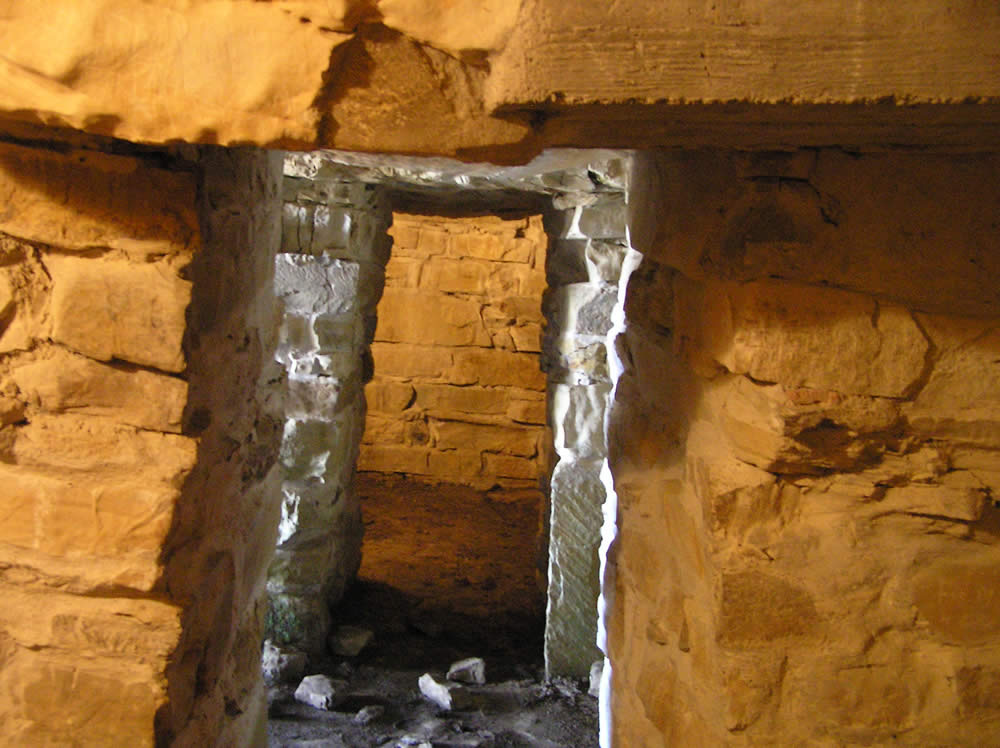
Etruscan Tumulus of Montecalvario, Castellina in Chianti, Siena. Author and Copyright Marco Ramerini
HOW TO GET
Getting there: To reach the Tumulus from Castellina in Chianti you must take the State Route 222 Chiantigiana direction Greve in Chianti, a few hundred meters from the village of Castellina in Chianti, along the road to Greve in Chianti, a short detour on the left leads to the Etruscan tomb of Montecalvario.
NB: As you enter you can turn on the lights of the graves with a timing device on the right of the entrance gate.
ETRUSCAN NECROPOLIS OF POGGINO
The Etruscan necropolis of Poggino shows the remains of Etruscan tombs. To reach the necropolis of Poggino from Castellina in Chianti take the road 222 Chiantigiana towards Siena, after a few kilometers near the village of Fonterutoli is the Necropolis of Poggino with some remains of Etruscan tombs.
In the archaeological area, located in a forest, were found five tombs, dating back to the sixth century BC, within them were recovered materials and furnishings, part of which are on display in the museum of the medieval fortress, among them there are two Attic black-figure amphorae, Etruscan-Corinthian unguentarium from Vulci, other vitreous paste, decorations and piece of arms in bronze and iron.
BIBLIOGRAPHY
- AA. VV. “Toscana” Guide Rosse Touring Club Italiano, 2007
- Stopani Renato “Castellina in Chianti” 2005, Firenzelibri
- Ciampolini Marco, Avanzati Elisabetta “Il Chianti senese. Masse orientali di Siena: Castelnuovo Berardenga, Gaiole in Chianti, Castellina in Chianti, Radda in Chianti” 2001, NIE
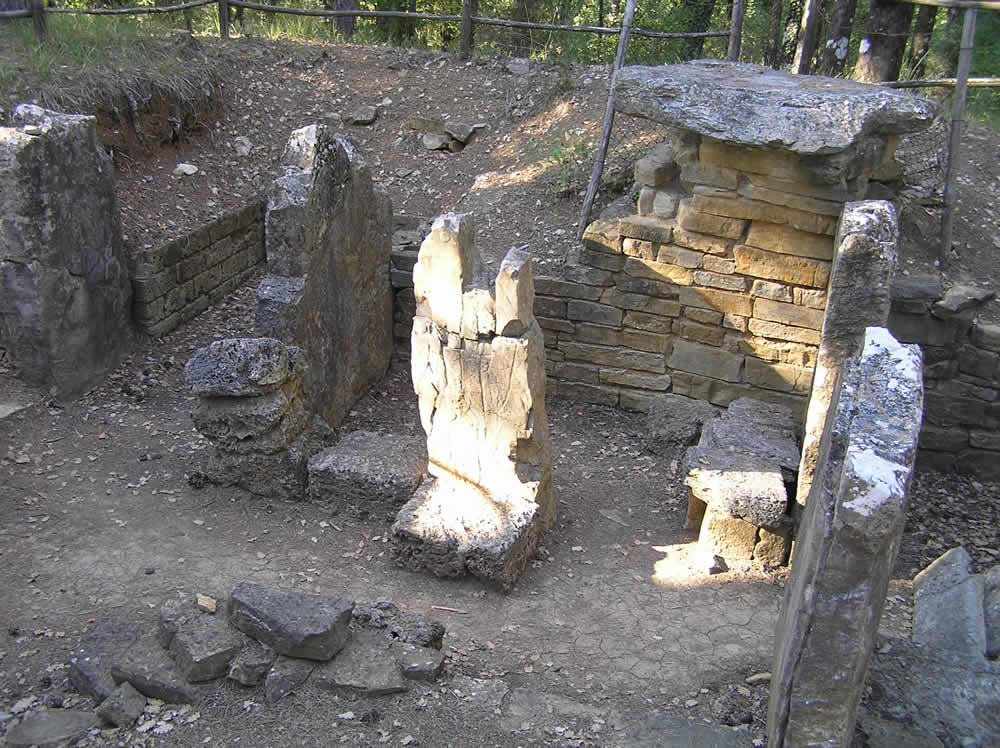
Etruscan Tomb, Necropolis of Poggino, Castellina in Chianti, Siena. Author and Copyright Marco Ramerini
- Tumulus of Montecalvario, Castellina in Chianti, Siena. Author and Copyright Marco Ramerini
- Tumulus of Montecalvario, Castellina in Chianti, Siena.. Author and Copyright Marco Ramerini
- Etruscan Tomb, Necropolis of Poggino, Castellina in Chianti, Siena.. Author and Copyright Marco Ramerini
- Etruscan Tomb, Necropolis of Poggino, Castellina in Chianti, Siena. Author and Copyright Marco Ramerini
 Borghi di Toscana Guida ai borghi e ai paesaggi della Toscana
Borghi di Toscana Guida ai borghi e ai paesaggi della Toscana
